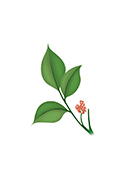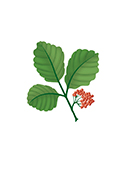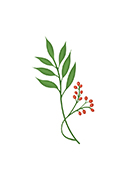Staying Away from Poison Ivy, Poison Oak, and Poison Sumac
Poison oak, poison ivy, and poison sumac are plants that can cause skin rashes. The problem is a sap oil called urushiol that is contained in these plants. If you're allergic to urushiol—and most people are—touching one of these plants may cause your skin to react. Within hours or days, you may have a red, swollen, itchy rash. Some people may have black or red spots or streaks.
Recognizing these plants
You can help prevent a poison oak, poison ivy, or poison sumac rash. Know what these plants look like. And then stay away from them. They grow in the form of vines, small plants, and large bushes. In most cases, poison oak and poison ivy have 3 leaves per stem. Poison sumac has from 7 leaves to 13 leaves per stem. Watch out for these plants when you go to any outdoor area, from a friend's overgrown back yard to the wilderness. Urushiol is present in these plants all year round. The oil is on the leaves, stems, and roots of these plants. The oil is there when the plant is live, dried up, or dead. So always be on the lookout no matter the season.
 |
| Poison ivy. |
 |
| Poison oak. |
 |
| Poison sumac. |
What causes a reaction?
Poison oak, poison ivy, and poison sumac thrive mainly in unmaintained outdoor areas. If you touch these plants, you may get a rash. You may also react if you touch something that came in contact with urushiol, such as a dog or cat, clothing, or equipment. Uroshiol on your skin or clothes can be passed on to another person. Once you have washed the oil off your skin, the rash caused by these plants is not contagious.
Steps to prevention
When heading outdoors, take these preventive steps:
-
Don't touch any of these plants.
-
Wear long pants and a long-sleeved shirt.
-
If you're going to a heavily wooded or brushy area, also put on gloves, a hat, and boots.
-
If you are very sensitive, apply bentoquatam 5% topical cream to all exposed areas of your skin. This creates a layer of protection between your skin and any sap oil you may touch.
-
If you come in contact with these plants or the oil, wash with soap and water as soon as possible.
-
Wash clothing and animals that come in contact with these plants as well. Urushiol may stay on them and cause a rash when you touch them in the future.
Online Medical Reviewer:
L Renee Watson MSN RN
Online Medical Reviewer:
Michael Lehrer MD
Online Medical Reviewer:
Rita Sather RN
Date Last Reviewed:
8/1/2022
© 2000-2024 The StayWell Company, LLC. All rights reserved. This information is not intended as a substitute for professional medical care. Always follow your healthcare professional's instructions.